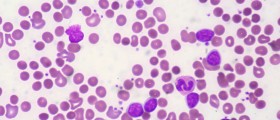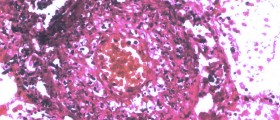
Rheumatic fever is an inflammatory disease and it results from inadequately treated strep throat infection (infection caused by A streptococcus bacteria). The condition generally affects the heart and may cause a permanent damage to the organ. Several more organs may be affected with the process of inflammation (joints, skin and the brain). In majority of cases rheumatic fever occurs in children between the age of 5 and 15. It occurs in younger children and adults as well. The goal of the treatment is to reduce the damage caused by inflammation and eliminate all symptoms and signs of rheumatic fever.
Causes of Rheumatic Fever
Rheumatic fever may develop after an infection of the throat caused by Streptococcus pyogenes (an infective agent than belongs to group A streptococcus). The precise connection between strep throat infection and rheumatic fever has not been fully understood yet. However, it seems that bacteria make certain changes in the immune system. Namely, the bacteria contain a protein that is quite similar to a protein normally found in human body. This is why the immune system may send cells to attack body tissues that contain such protein. The overall effect of the abnormal immune system reaction is inflammation.
Clinical Characteristics of Rheumatic Fever
Rheumatic fever initially leads to abdominal pain and fever. Once the heart is damaged to certain extent a person may complain about cardiac problems such as shortness of breath. Some patients do not develop heart symptoms at all but the process of inflammation affect other organs. Inflammation of joints is associated with swelling, redness and warmth. In some cases there are skin nodules, skin rash and skin eruption on the trunk and upper part of the arms and legs. And finally, Sydenham chorea, a condition that typically features with emotional instability, muscle weakness and rapid, uncoordinated jerky movements of different parts of the body (predominantly the face, feet and hands) is yet another characteristic of rheumatic fever.
Diagnosis and Treatment for Rheumatic Fever
Apart from complete physical exam, doctor performs several more tests. They include a blood test for recurrent strep infection (ASO test), complete blood count, sedimentation rate and electrocardiogram (EKG). Major criteria for confirming the condition are polyartheritis, carditis, subcutaneous skin nodes, chorea (Sydenham chorea) and skin rash- erythema marginatum. Minor criteria include fever, increased sedimentation rate and joint pain.
Treatment for rheumatic fever includes antibiotics and anti-inflammatory drugs such as corticosteroids. In case the condition is not treated properly several complications may occur. They include arrhythmias, damage to heart valves, endocarditis, pericarditis and heart failure.
















Your thoughts on this
Loading...